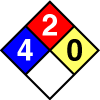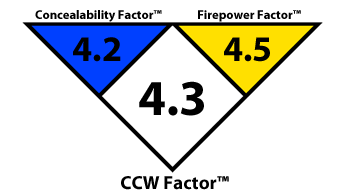jersey_emt
New member
I'm a web developer and database administrator, and have been working on a firearms-related side project recently, which will be launched mid-year. It is an online reference guide for all firearms that are readily available new or used. Listings for each gun will include dimensions, specifications, photos, links to reviews, user ratings, etc. You'll be able to search by firearm type (pistol, rifle, etc.), manufacturer, caliber, form factor (full-size, compact, etc.), action type (semi-auto, bolt-action, pump, etc.), and so forth.
One idea for the handguns portion of the site I had would be to help people choose a concealed-carry weapon. It would entail creating weighted calculations to rank potential CCW handguns based on size, weight, caliber, and capacity.
For example, the calculation for "concealability" would take length, width, height, and weight into consideration. Since width is generally the most important dimension for concealed carry, a handgun's width would be weighted higher in the calculation than its length or height. So, a 2 mm difference in a handgun's width would change the "calculated concealability" more than a 2 mm difference in length.
The calculation for firepower would take caliber and capacity into consideration.
I'm still doing research and working on the details of the best way to calculate these two figures. I'm sure that these figures could help people narrow down their choices for a concealed carry weapon. But then I wondered about combining the two...creating a formula that would calculate one single figure that takes everything into consideration -- width, height, length, weight, caliber, and capacity. Guns that are smaller, lighter, chambered for a larger caliber, and have more capacity would receive higher ratings than guns that are larger, heavier, chambered for smaller calibers, and have less capacity.
I know that it's going to take a lot of tweaking to hash out a formula that actually "works", and that no matter how good it is, that many people will simply not agree with how various handguns are ranked.
My question is this:
Would something like what is described -- a formula that will rank any given handgun's overall effectiveness in the concealed carry role -- be something that you would like to see on a firearms reference site and buying guide? Or would it be something that you would just ignore, or worse, think that it would only add clutter to a page that already has a lot of numbers on it? Would it be something that you think you would use, or would you not even bother with it all?
Thanks in advance for your input. Moderators -- because this mainly has to do with handguns as a whole, the General Handgun forum is where I felt that this question belongs, but please move it elsewhere if this is the wrong section for something like this.
One idea for the handguns portion of the site I had would be to help people choose a concealed-carry weapon. It would entail creating weighted calculations to rank potential CCW handguns based on size, weight, caliber, and capacity.
For example, the calculation for "concealability" would take length, width, height, and weight into consideration. Since width is generally the most important dimension for concealed carry, a handgun's width would be weighted higher in the calculation than its length or height. So, a 2 mm difference in a handgun's width would change the "calculated concealability" more than a 2 mm difference in length.
The calculation for firepower would take caliber and capacity into consideration.
I'm still doing research and working on the details of the best way to calculate these two figures. I'm sure that these figures could help people narrow down their choices for a concealed carry weapon. But then I wondered about combining the two...creating a formula that would calculate one single figure that takes everything into consideration -- width, height, length, weight, caliber, and capacity. Guns that are smaller, lighter, chambered for a larger caliber, and have more capacity would receive higher ratings than guns that are larger, heavier, chambered for smaller calibers, and have less capacity.
I know that it's going to take a lot of tweaking to hash out a formula that actually "works", and that no matter how good it is, that many people will simply not agree with how various handguns are ranked.
My question is this:
Would something like what is described -- a formula that will rank any given handgun's overall effectiveness in the concealed carry role -- be something that you would like to see on a firearms reference site and buying guide? Or would it be something that you would just ignore, or worse, think that it would only add clutter to a page that already has a lot of numbers on it? Would it be something that you think you would use, or would you not even bother with it all?
Thanks in advance for your input. Moderators -- because this mainly has to do with handguns as a whole, the General Handgun forum is where I felt that this question belongs, but please move it elsewhere if this is the wrong section for something like this.


